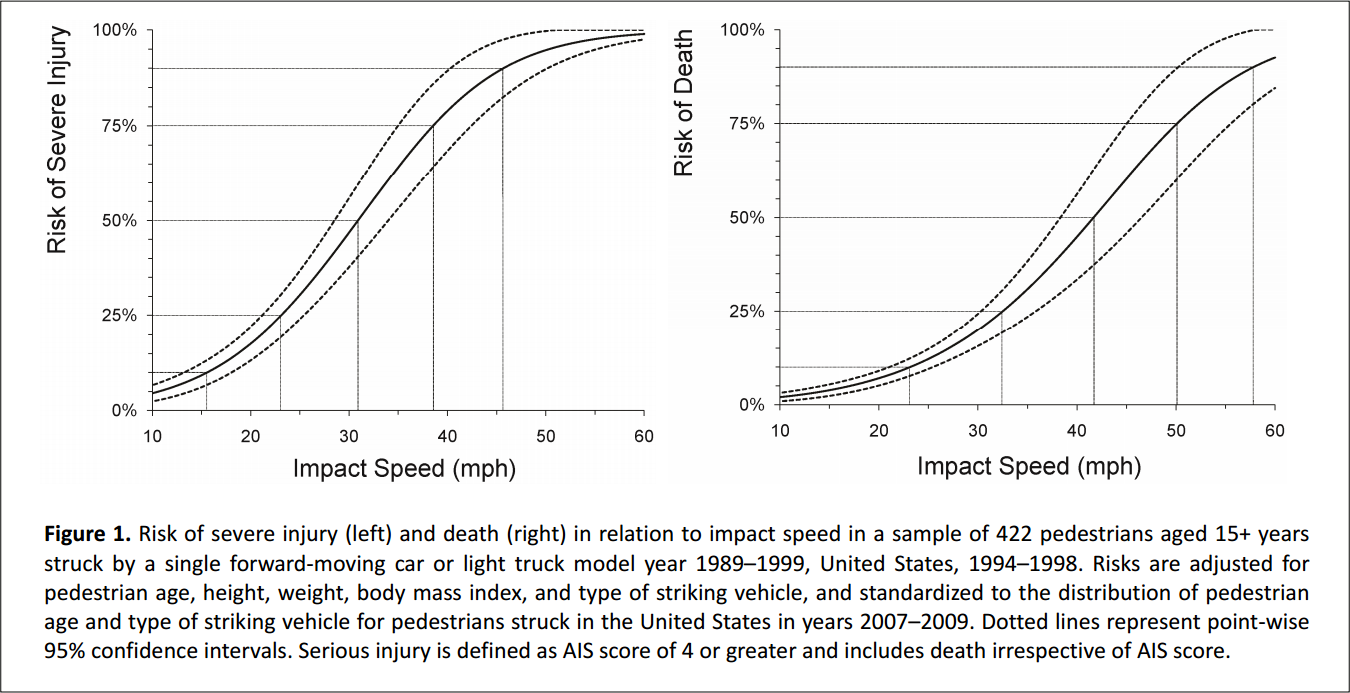Like you, I am an above-average driver. I achieved this status by inviolable personal rules.
Driving is almost definitely the most dangerous thing I do in a given day. Nothing puts me, my wife, or my kids at greater risk. We live in a culture where it’s socially acceptable to drive while rushed, stressed out, and distracted. How are any of us still alive?
It occurred to me the other day that I have already started teaching my 5 year-old daughter how to drive. I teach her every day what is okay by what I do. So I got to thinking about it and realized I have a series of rules I follow (and should follow more strictly) that I want to be second nature to her years before she ever touches a set of keys. I have started using these rules by name with her. I’m writing them up to codify them for myself.
Remember Physics (Momentum, kinetic energy, etc.)
Driving is probably the most important reason the everyman took physics in high school. If you understand kinetic energy and momentum and don’t focus all your attention on the road while driving, there is nothing I can do to help you. Do your part in reducing the necessary energy dissipation required on your side of the equation to save your and other peoples’ lives. You can’t control how fast the person you hit is driving, but you can slow down a little bit.
By the way, this rule has less to do with how fast you drive and more to do with how serious and focused you stay while driving.
Respect The Wall
What is The Wall? The Wall is an invisible 10-ft tall, 2-ft wide brick wall running down the centerline of every street. Even though you do not see it, The Wall is there. So why not cut a corner turning into your neighborhood? For obvious reason: You will crash your car into the massive brick wall there.
Driving through your tranquil neighborhood and tempted to cut the corner into your cul-de-sac? Respect The Wall.
Driving the only car in an empty parking lot in the middle of Montana at 3 o’clock in the morning? Respect The Wall.
We fail to respect The Wall because respecting The Wall isn’t convenient, because we are lazy, because we let the rush we are in overtake our responsibility to protect ourselves, our passengers, and whoever else is on the road.
We violate The Wall because we think we can see well enough to know there isn’t a car coming (or won’t be eminently). But here’s the thing: I’m not that confident in my ability to anticipate every hidden drive or unexpected circumstance.
If you strike a car while violating The Wall, it is your fault, emphatically your fault. You broke the rules, not the person you just hurt. Never driving in someone else’s lane has to drastically reduce the probability of getting in an accident.
I try to only break this rule for obvious exceptions, and only after I am completely sure it is safe: passing cyclists, giving extra margin to playing kids, and the like.
Delete Risk from Your Map
We’ve all driven through certain intersection sor made a turn where higher-than-normal risk is involved. Visibility is limited. A light doesn’t give enough time. You have to do something where you don’t feel in control. You have to expose yourself before you can see if the coast is clear.
Once I identify a stretch of road or intersection like this, as much as it is in my power, I never go that way again. The rule: I delete it from my map.
Example: There are precisely three ways to access my neighborhood when driving home from work. I only use two of these, ever. Zero exceptions. The third has a short turn light and people tend to get stranded in the intersection and make stupid moves—this intersection was ranked in an article I read as one of the 10 most dangerous intersections in Massachusetts based on fatality data.
So it’s gone. Dead to me. Deleted from my map. Inasmuch as I can help it, I will never go that way again.
It Can Wait
Receive a text while driving? It can wait.
Get a call while driving? It can wait.
Confused thinking my GPS is sending me the wrong way? It can wait.
Forgot to tell your wife something after pulling out of the driveway? It can wait.
Spill your coffee? It can wait.
Your kid dropped their breakfast on the floor? It can wait.
It can wait the two minutes it will take for you to find a safe place to pull over and text back, call back, and salvage the spilled food.
Drive Painfully Slow in Neighborhoods where Kids Play
When you are in a neighborhood where there is virtually ANY chance a running kid could chase a rolling ball into your path, drive no faster than 10 or 15 mph. Driving slower reduces your stopping distance as well as the risk of severe injury to a pedestrian you strike. The probability of severely injuring a pedestrian is very low when the impact speed is less than 10 mph. On most graphs I saw during a cursory lit review, the probability of death jumps from 10% to 75% between 20 and 50 mph. Here are the cumulative distribution functions from one study I found:

Whether you agree with the methods of that (or any) particular paper, wouldn’t you feel better knowing that people in your neighborhood (where your 5 year-old plays) were driving 10 mph? I sure would.
Conclusions
So that’s it, just a humble plea to be a bit more mindful when driving. Thanks for reading.